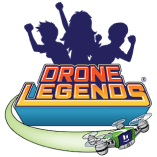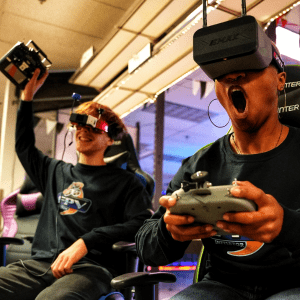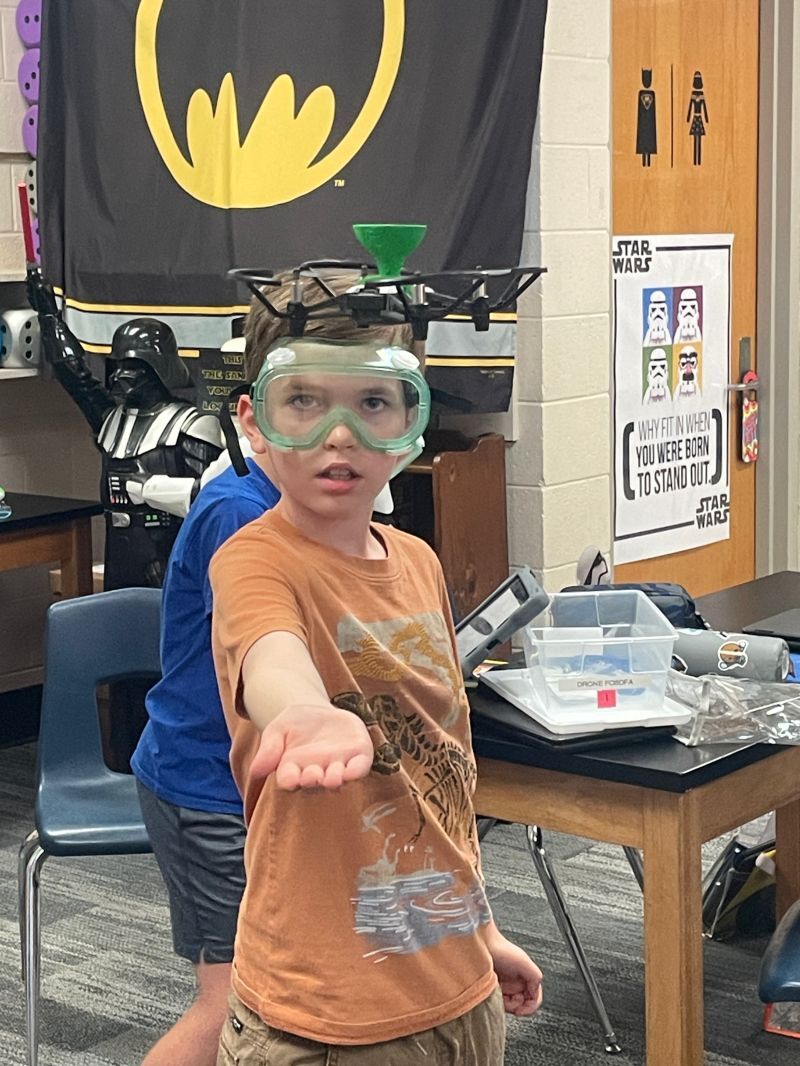Welcome to the fascinating world of drones! In this blog, we delve into the dynamic field of drone technology and its integration into the STEM curriculum for grades 4-8. Drones, more than just a technological marvel, have emerged as a versatile tool in modern education, offering an engaging platform for students to learn various STEM concepts. This guide aims to assist teachers in effectively introducing drone basics to young learners, enriching their classroom experience, and igniting a passion for STEM learning.
We will explore how drone curriculum can be seamlessly integrated into your teaching strategy, providing practical insights and innovative approaches to leverage drone technology for educational purposes. Our focus will extend beyond the technical aspects, emphasizing how drone programs can enhance critical thinking, problem-solving skills, and collaborative learning among students.
Whether you’re a seasoned educator familiar with drone technology or a curious teacher eager to explore new teaching methods, this guide offers something for everyone. Let’s embark on this exciting journey to transform your classroom with the power of drone technology and STEM education.
Integrating Drone Technology in STEM Education: An Essential Move for Young Learners
In an era where technology and education are increasingly intertwined, the integration of drone technology into the STEM curriculum presents a unique and compelling opportunity. Teaching drone technology to young learners is not just about keeping up with technological trends; it’s about equipping them with skills and knowledge that are becoming essential in the modern world. Here’s why incorporating drone technology into STEM education is vital for students in grades 4-8:
- Enhancing STEM Learning: Drones are a perfect fit for the STEM curriculum. They encompass various aspects of science, technology, engineering, and mathematics, providing a comprehensive learning tool. Through drones, students can explore aerodynamics, learn basic coding, and understand the principles of robotics and GPS technology.
- Promoting Innovation and Creativity: Drone programs stimulate creativity in young minds. They challenge students to think beyond traditional learning methods, encouraging them to innovate, whether it’s in designing drone models, mapping flight paths, or applying drones to solve real-world problems.
- Critical Skill Development: Drones in education foster critical thinking and problem-solving skills. These skills are integral to the STEM curriculum and are crucial for students’ overall intellectual development.
- Engaging and Interactive Learning: The interactive nature of drone-based learning resonates with young learners, making the STEM curriculum more engaging and enjoyable. This hands-on approach to learning keeps students motivated and interested in STEM subjects.
- Career Preparation: Understanding drone technology prepares students for a future where drones are increasingly prevalent in various sectors. Early exposure through a structured drone curriculum can open up new career possibilities in technology and engineering fields.
Targeting the Drone Curriculum to Grades 4-8: A Strategic Choice
Our focus on grades 4-8 for drone programs is a strategic decision aimed at maximizing the impact of this technology in the classroom. This age group is uniquely positioned to benefit from drone education for the following reasons:
- Cognitive and Developmental Suitability: Students in these grades have reached a level of cognitive maturity that allows them to grasp the fundamental concepts of drone operation and its applications in STEM. This makes them ideal recipients of a drone curriculum that is both challenging and educational.
- Curiosity and Engagement: Children in grades 4-8 are often at the peak of their curiosity and openness to new learning experiences. Introducing drones at this stage taps into their innate sense of wonder, significantly enhancing their engagement with STEM subjects.
- Skill Building for the Future: This age group is at a critical stage for developing key skills such as teamwork, problem-solving, and creative thinking. Drone programs in the classroom provide a practical and exciting way for students to develop these skills.
- Alignment with Educational Standards: The drone curriculum for grades 4-8 aligns well with national and international educational standards in STEM. It complements and enriches the existing curriculum, making it a valuable educational tool.
- Laying the Foundation for Advanced Learning: Introducing drones at this stage sets the stage for more advanced STEM learning in higher grades. It builds a strong foundation that can be expanded upon as students progress in their education.
Practical Implementation of Drone Programs in the Classroom
Integrating drone technology into classroom teaching can be an exciting and transformative experience for both students and teachers. However, practical implementation requires thoughtful planning and a clear understanding of how to blend drone activities with the STEM curriculum effectively. Here are some recommended steps to help you bring drone programs into your classrooms:
- Aligning with Curriculum Objectives:
-
-
- Begin by identifying areas of the existing STEM curriculum where drone technology can naturally fit. This could be in lessons on physics (principles of flight), math (calculating flight paths), technology (understanding drone operation), or engineering (designing drone models).
- Ensure that drone activities align with learning objectives and complement the curriculum rather than distracting from it.
-
- Developing Structured Lesson Plans:
-
-
- Create structured lesson plans that incorporate drone technology. These plans should include clear learning outcomes, step-by-step instructions for activities, and guidelines for student interactions with drones.
- Include both theoretical and practical components. For instance, a lesson on aerodynamics could be paired with a practical drone flying session.
-
- Choosing the Right Equipment:
-
-
- Select drones that are suitable for educational purposes. Look for models that are durable, safe, and user-friendly for grades 4-8. Avoid overly complex or expensive drones that may not be suitable for young learners.
- Consider investing in drone kits that students can assemble, offering an additional layer of educational value.
-
- Hands-on Learning and Experiments:
-
-
- Plan hands-on activities that allow students to experiment with drone flying under supervision. These activities should be designed to reinforce the theoretical concepts learned in class.
- Encourage students to participate in designing flight paths, executing flights, and analyzing data collected by drones.
-
- Incorporating Teamwork and Collaboration:
-
-
- Structure drone activities to promote teamwork and collaboration. Assign students to groups where they can take on different roles, such as pilot, navigator, or data analyst.
- Encourage collaborative problem-solving, where students work together to overcome challenges such as navigating obstacles or completing a flight mission.
-
- Ensuring Safety and Compliance:
-
-
- Prioritize safety by educating students on safe drone operation practices. Establish clear rules and guidelines for handling and flying drones.
- Stay informed about local regulations and compliance requirements for drone flying, and ensure that all activities are conducted within legal boundaries.
-
- Evaluating and Reflecting on Activities:
-
- After each drone-based activity, hold a reflection session. Discuss what was learned, challenges faced, and how the activity ties into the broader STEM curriculum.
- Use these sessions to assess student understanding and gather feedback for improving future drone activities.
Future Trends in Drone Technology and Education
As we look forward, the landscape of drone technology and its application in education is poised to evolve in exciting ways. Staying abreast of these trends is crucial if you are looking to continually enrich your STEM curriculum with relevant and forward-thinking content. Here’s a glimpse into the future trends in drone technology and their potential impact on education:
-
- Advancements in Drone Technology:
- Expect to see drones becoming more sophisticated yet user-friendly, with advancements in autonomous flight, improved safety features, and enhanced data collection capabilities.
- These technological improvements will make drones more accessible and applicable in a variety of educational contexts, allowing for more complex and diverse learning experiences.
- Advancements in Drone Technology:
- Integration of AI and Machine Learning:
-
-
- The integration of AI and machine learning into drones will open up new avenues for educational exploration. Students could learn about data analysis, pattern recognition, and decision-making processes of AI through practical drone-based activities.
- This integration will also facilitate more advanced projects, such as environmental monitoring or data-driven research assignments.
-
- Expanded Interdisciplinary Applications:
-
-
- Drones will increasingly be used as tools for interdisciplinary learning. For example, combining drone technology with subjects like environmental science, geography, and even art can provide rich, multi-faceted learning experiences.
- This interdisciplinary approach will help students understand the real-world applications of drones, making STEM subjects more relevant and engaging.
-
- Enhanced Virtual Reality (VR) and Augmented Reality (AR) Experiences:
-
-
- The use of VR and AR in drone education will become more prevalent. These technologies can simulate drone flying experiences or visualize data collected by drones, providing an immersive learning environment.
- This will be particularly useful in situations where actual drone flying is not feasible due to space or safety constraints.
-
- Increased Focus on Ethics and Responsible Use:
-
-
- As drones become more common, there will be a growing emphasis on teaching students about the ethical implications of drone use. Topics like privacy, responsible flying, and environmental impact will become key components of drone education.
- Preparing students to think critically about these issues will be crucial as they become the next generation of drone operators and engineers.
-
- Collaboration with Industry and Research:
-
-
- Educational institutions may collaborate more closely with industries and research organizations using drones. This could provide students with real-world experience and exposure to career opportunities in drone technology.
- Such collaborations could also lead to student-led research projects or internships, bridging the gap between education and industry.
-
- Policy and Regulation Education:
-
- As drone usage expands, understanding the legal and regulatory aspects will become increasingly important. You will need to incorporate these topics into the curriculum to ensure students are aware of the legal framework surrounding drone operations.
Assessment and Evaluation in Drone Education
Assessing and evaluating students’ progress in drone-based learning is crucial to ensuring the effectiveness of the drone curriculum and its alignment with broader STEM educational goals. This section outlines methods and strategies for evaluating student learning and the overall impact of drone programs in the classroom:
- Setting Clear Learning Objectives:
-
-
- Begin by establishing clear, measurable learning objectives for each drone-related activity or module. These should align with the broader goals of the STEM curriculum and be specific to the skills and knowledge associated with drone technology.
- Objectives could range from understanding the basics of drone mechanics to demonstrating safe and responsible drone operation.
-
- Formative Assessments:
-
-
- Implement formative assessments throughout the drone program to monitor student progress and understanding. This can include quizzes, in-class activities, group discussions, and practical drone operation tasks.
- These assessments should be designed to gauge students’ grasp of theoretical concepts as well as practical skills.
-
- Summative Assessments:
-
-
- Conduct summative assessments at the end of a learning unit or program to evaluate overall student learning and achievement. This could take the form of a project, a written test, or a demonstration of drone flying skills.
- Ensure that these assessments cover both the cognitive (knowledge-based) and psychomotor (skills-based) aspects of drone learning.
-
- Project-Based Learning:
-
-
- Encourage students to undertake projects that require the application of drone technology to real-world problems. This not only assesses their technical skills but also their ability to apply knowledge creatively and solve problems.
- Projects can be individual or group-based, fostering collaboration and teamwork.
-
- Peer and Self-Assessment:
-
-
- Incorporate peer and self-assessment strategies to encourage reflective learning. Students can assess their own progress and that of their peers, providing valuable feedback and insights.
- This approach fosters a sense of responsibility and critical thinking among students.
-
- Teacher Observations:
-
-
- Regular teacher observations during drone activities are essential. Take note of students’ engagement, problem-solving approaches, and adherence to safety protocols.
- Observations can provide qualitative data that is crucial for understanding the effectiveness of teaching methods and student interactions with technology.
-
- Feedback Mechanisms:
-
-
- Establish channels for regular feedback from students about the drone program. Understand their experiences, challenges, and suggestions for improvement.
- This feedback is invaluable for refining the drone curriculum and making it more responsive to student needs.
-
- Alignment with Standards:
-
-
- Ensure that the assessment methods align with national and international educational standards in STEM education. This ensures that the drone curriculum is not only innovative but also academically rigorous and standardized.
-
- Documenting and Reflecting on Outcomes:
-
- Maintain records of assessments and student performances. This documentation can be used to reflect on the effectiveness of the drone program and to identify areas for improvement.
- Regular reflection and adjustment based on these outcomes are key to the ongoing success and relevance of the drone curriculum.
The journey through the various facets of drone education—from the importance of drone technology for young learners to the innovative methods of assessment and evaluation—underscores the transformative potential of drones in enhancing STEM learning. We have seen how drone programs can ignite creativity, foster critical thinking, and cultivate a passion for learning. These programs not only complement traditional educational methods but also open doors to new ways of understanding and interacting with the world.
For educators, the implementation of a drone curriculum offers a unique opportunity to be at the forefront of educational innovation. By embracing drone technology, teachers can provide their students with invaluable skills and knowledge, setting them on a path to success in a rapidly evolving technological landscape. The practical guidelines outlined in this guide serve as a roadmap for educators to integrate drones into their teaching, ensuring a safe, engaging, and educationally rich experience for students.
As we look ahead, the future of drone technology in education is bright and full of possibilities. We can anticipate continued advancements in drone technology, bringing even more dynamic and immersive learning experiences to our classrooms. The responsibility and excitement lie with us, the educators, to harness this potential and guide our students in navigating the exciting world of drone technology.




